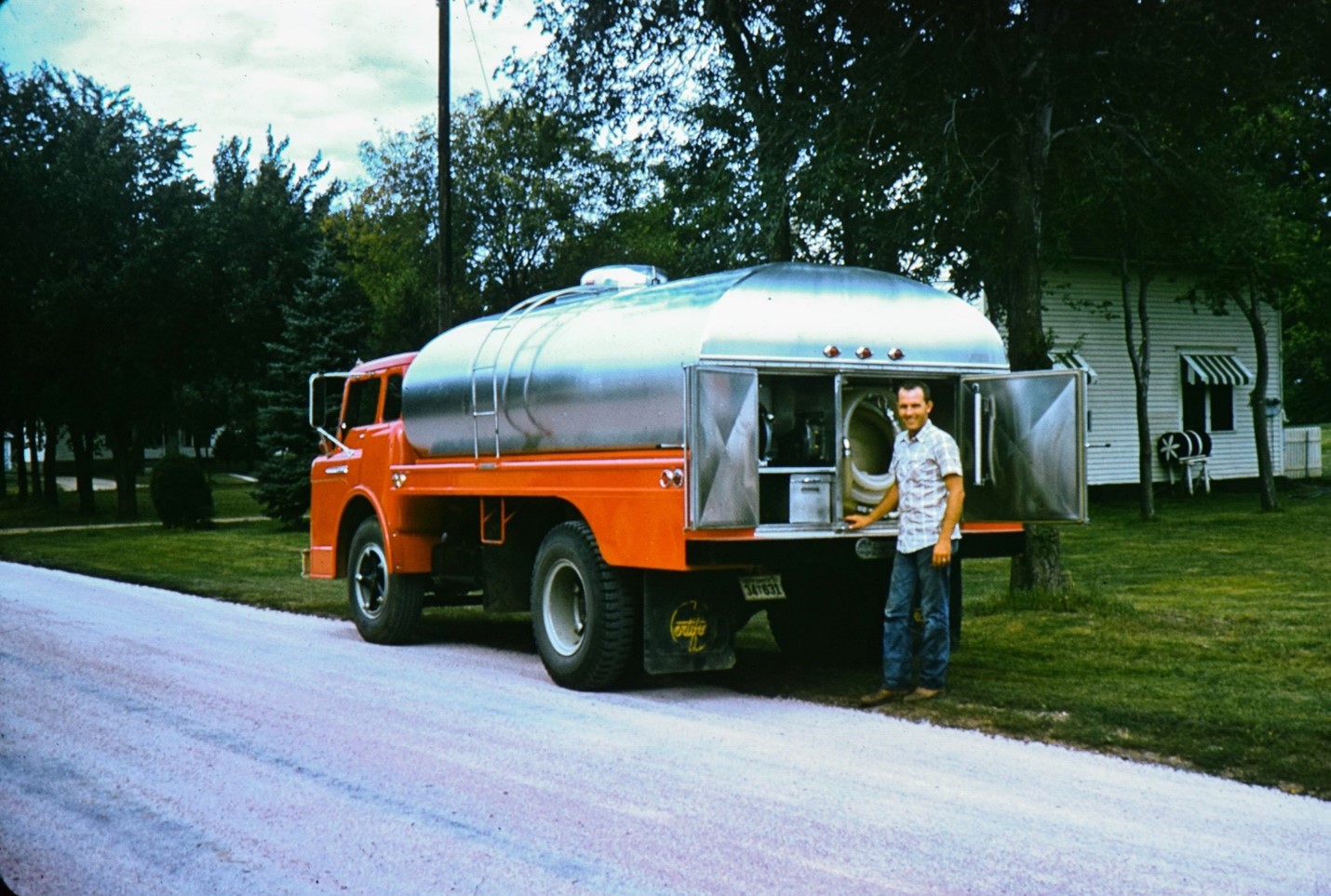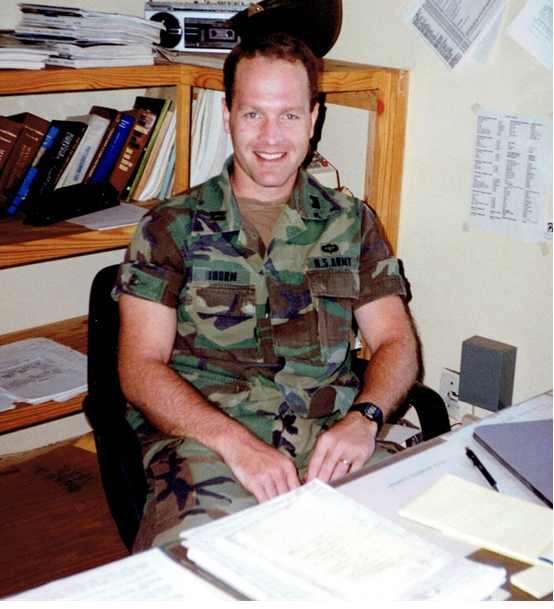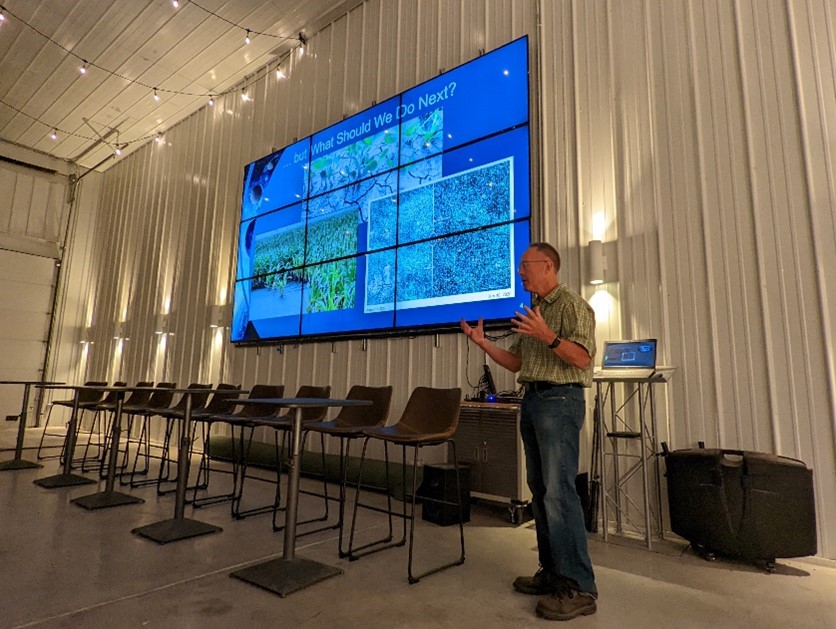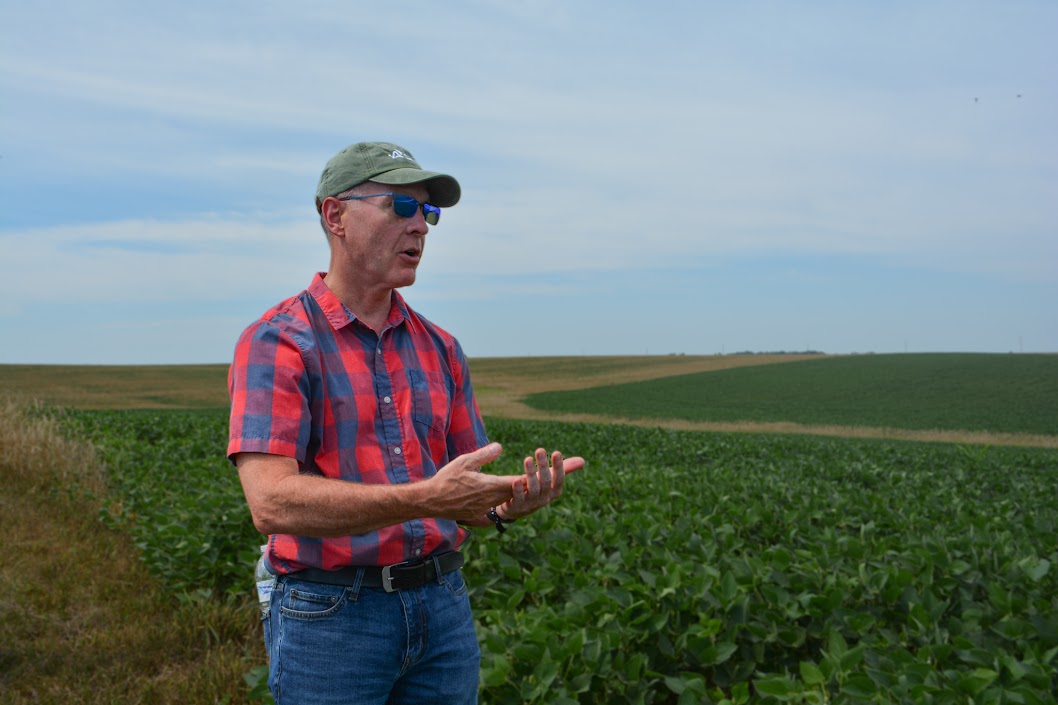NASA’s Brad Doorn Brings Farm Belt Wisdom to Space-Age Agriculture
NASA’s Brad Doorn Brings Farm Belt Wisdom to Space-Age Agriculture
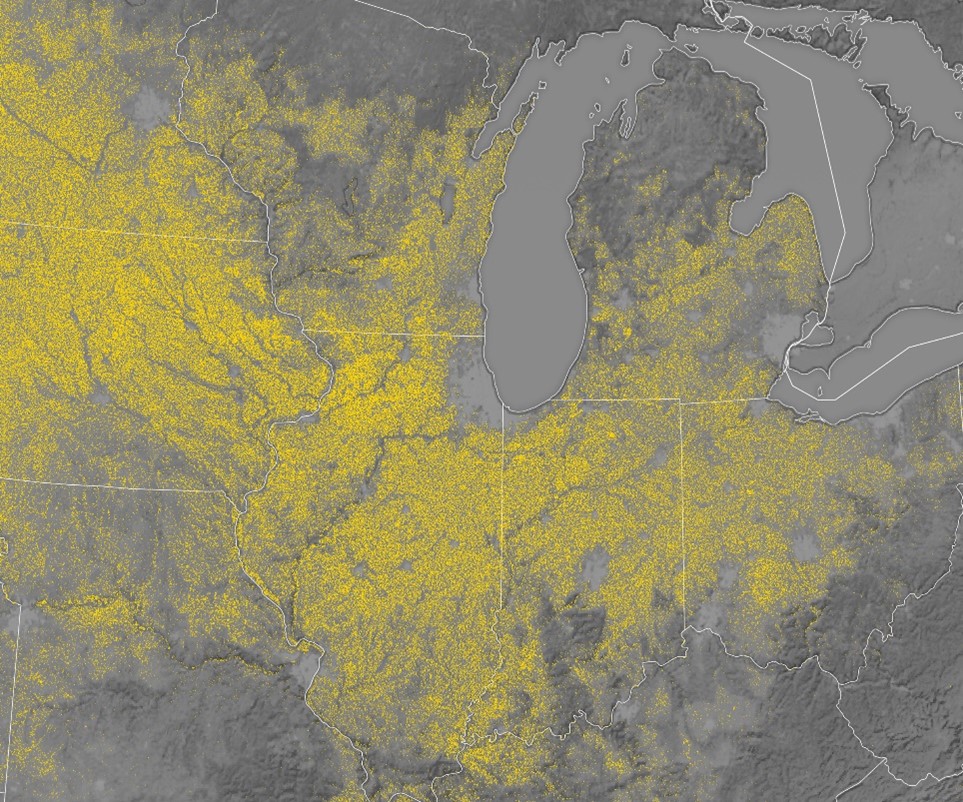
NASA Earth Observatory/ Lauren Dauphin
Bradley Doorn grew up in his family’s trucking business, which hauled milk and animal feed across the sprawling plains of South Dakota. Home was Mitchell, a small town famous for its Corn Palace, where murals crafted from corn kernels and husks have adorned its facade since 1892—a tribute to the abundance of the surrounding farmland.
Trucking was often grueling work for the family, the day breaking early and ending in headlights. Like farming, driving a truck wasn’t just a job; it was the engine of daily life, thrumming through nearly every conversation and decision.
Brad loved the outdoors, and by the time he started college in the early 1980s, studying geological engineering felt like a natural fit. “I wanted to be out in the field somewhere, working under the big skies of the West,” Brad recalled. But in his sophomore year at the South Dakota School of Mines and Technology, the tuition money dried up.
Doorn found himself at a crossroads familiar to many in rural America: return to the certainty of a family trade or chart a new route. “That’s when the Army stepped in,” he said. The ROTC program offered a way to continue with school and a path into the world of remote sensing—a field that would come to define his career.
Brad’s choice to join the Army would eventually place him at the forefront of a mapping revolution, equipping him to see and analyze Earth in ways never possible before the advent of satellites. But more than the technical skills, the military showed him the allure of a life anchored to mission and team.
Even as his career took him far from Mitchell, Doorn would remain connected to his rural America roots. Today, he leads NASA’s agriculture programs within the agency’s Earth Science Division. “My family wasn’t made up of farmers, but farming was a part of everything growing up,” said Brad. “Even now, working with NASA, that connection to the land—the sense of how weather, crops, and people are tied together—it’s still in everything I do.”
Amid the dazzle of NASA’s feats exploring the solar system and universe, it’s easy to miss the agency’s quiet work in fields of soy and wheat. But for more than 60 years, the agency has harnessed the power of its satellites to deliver crucial data on temperature, precipitation, crop yields, and more to farmers, policymakers, and food security experts worldwide.
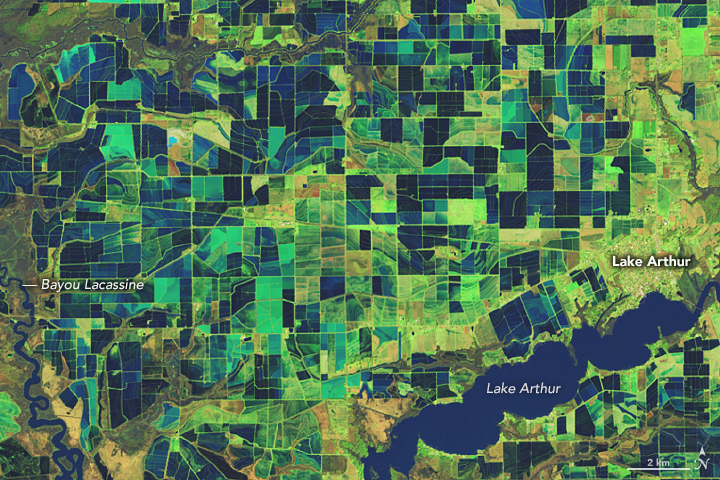
From orbit, satellites beam down streams of data—numbers and pixels that, when paired with farmers’ knowledge of the land, can guide growers as they adjust irrigation levels or plan for the next planting. But the satellites don’t just yield data; they tell stories that call for action, enabling nations to brace for droughts, floods, and the prospect of empty grain silos.
“Under Brad’s guidance, NASA’s agriculture program has become a global leader for satellite-driven solutions, tackling food security and sustainability head-on,” said Lawrence Friedl, the senior engagement officer for NASA Earth Science. Reflecting on years of collaboration, he added: “I am so impressed and grateful for what he and his teams have accomplished.”
Boots Meet Satellites in the First Gulf War
Long before Brad began guiding NASA’s agricultural initiatives, he was already navigating tricky terrain, both literal and figurative, with satellite imagery. His career in remote sensing didn’t start with crops, but with the deserts of Iraq and Kuwait.
As part of the Army’s 18th Airborne Corps, Brad led a company at Fort Bragg (now Fort Liberty) in North Carolina that had just returned from operations in the First Gulf War, in the early 1990s. “I loved being part of a unit, part of something bigger than just me,” Brad recalled. “It felt good to have that purpose and mission.”
Far from the combat zone, Doorn’s company became cartographers of the invisible. Their task: merge data from the Landsat satellite with the gritty reality of desert warfare depicted on military maps.
Landsat, a civilian satellite built by NASA and operated by the U.S. Geological Survey, could see what the soldiers on the ground could not. Its thermal infrared sensor—a camera with a penchant for temperature and moisture—read the desert floor like an ancient script, picking out the cold, soggy signature of mud lurking beneath the desert’s deceptive crust. Each pixel of satellite data became a brushstroke in a new kind of map, keeping tanks out of the mire and the missions on track.
“It was so neat to see the remote sensing techniques I’d learned about in school actually making a difference,” Doorn said.
With this knowledge, he helped guide his unit’s shift from analog maps—paper grids and grease pencils—to the emerging world of digital mapping, a leap that sharpened the military’s ability to read the landscape and steer clear of trouble.
From Desert Muck to Farm Fields
Brad’s military experience gave him an early look at how satellite data could address tangible, on-the-ground challenges. In the Army, he saw how integrating satellite data into military maps could offer soldiers critical information. That experience set the foundation for his later work at NASA, where he would help develop technology with lasting, practical impacts.
Consider OpenET, a NASA-funded initiative that uses Landsat data to give farmers insights into water use and irrigation needs at field scale. The ET in OpenET stands not for the little alien who phoned home, but for evapotranspiration. It’s a combination of water evaporating from the ground and water released by plants into the air.
The program relies on the same thermal technology Doorn used during the Gulf War. Just as cooler, wetter areas in the desert hint at muddy spots, cooler patches in farm fields show where there’s more moisture or plants are releasing more water. These data are key to managing water resources wisely and keeping crops healthy.
“OpenET has transformed our understanding of water demand,” explained Doorn.
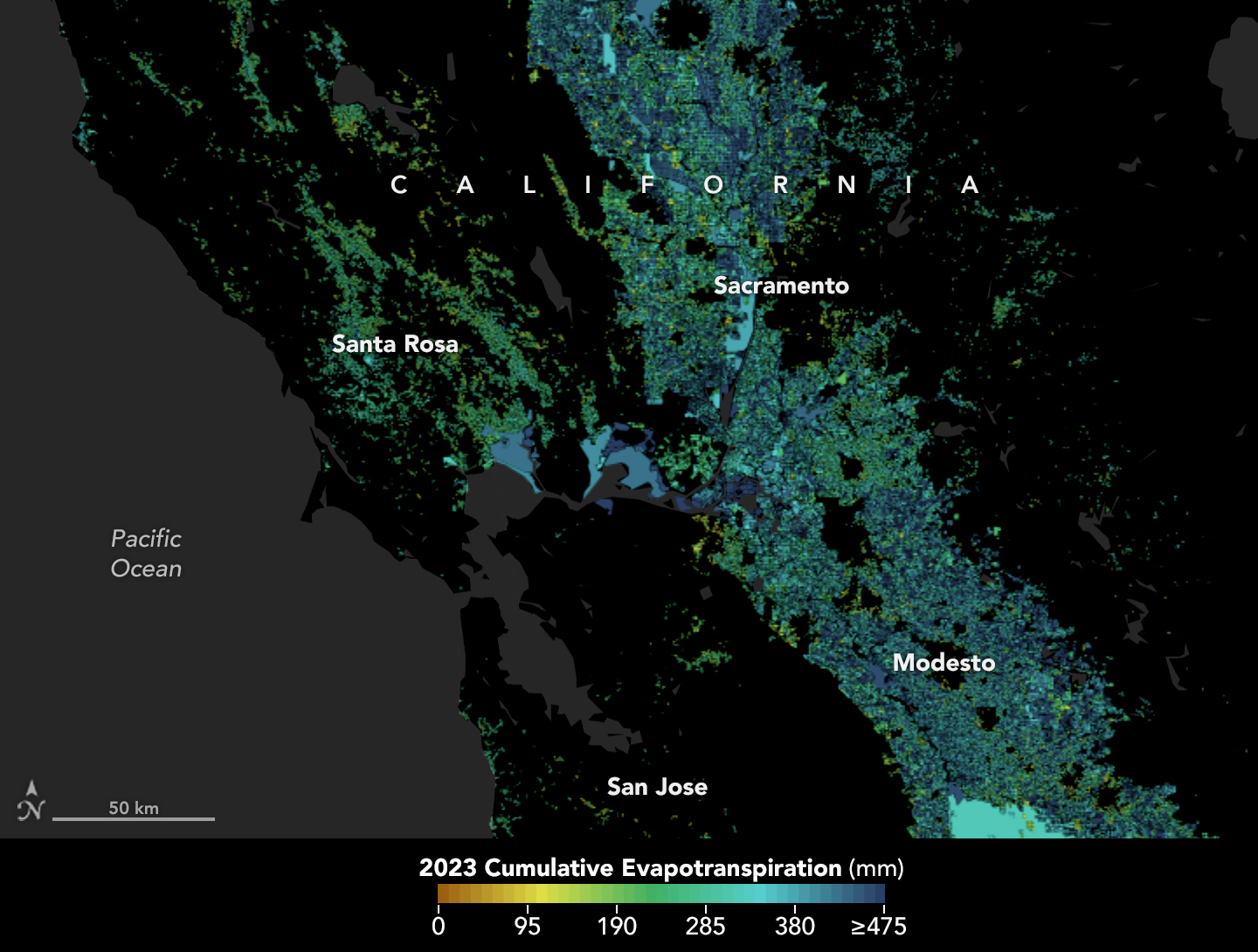
In the late 2000s, when a new generation of Landsat satellites was being planned, the thermal infrared imagers were initially left off the drawing board. “Landsat 8’s design caused a lot of consternation in some Western states that were beginning to use the instrument for measuring and monitoring water use,” said Tony Willardson, the executive director of the Western States Water Council, a government entity that advises western governors on water policy.
Brad played a key role in conveying to NASA the critical need for this technology, both for agriculture and water management, Willardson said. The thermal imager was eventually reinstated and has since “helped to close a gap in western water management.”
“A lot of the technologies that we are using more and more were developed by NASA,” said Willardson. “We need NASA to be doing even more in Earth science.”
Sowing Global Food Stability from Space
Brad ended up serving in the Army for nearly a decade. “You hit that 10-year mark in the military, and you sort of have to decide if you’re staying in for 20 or if you’re getting out,” said Brad. “My wife, Kristen, was able to manage her career as a registered dietician through the first four moves in six years, but eventually it was too much. So, I told her: ‘Your choice. You decide where we go next.’”
She chose southern Pennsylvania to be closer to her family. Brad was 32 years old, and the couple had two small children at the time—one of whom had had open-heart surgery at 6 weeks old to fix a heart defect. They would go on to have another child.
In the late 1990s, within a few years of leaving the military, Doorn found himself someplace he had never imagined: sitting behind a desk at the U.S. Department of Agriculture. For a boy who had grown up driving trucks across the plains of South Dakota—who had vowed never to work in an office, much less live east of the Mississippi—this was an unexpected detour. But he had long since learned that the best paths are often the ones you don’t see coming.
At USDA, he moved forward not with a grand plan, but with an instinctive trust in where curiosity and challenge might lead. He rose through the ranks, from a programmer to directing the agency’s international food production analysis program. He was increasingly driven by a conviction that satellite data, if used the right way, could transform how we see the land and the way we feed the world.
While at USDA, and later at NASA, which he joined in 2009, Brad was instrumental in developing and overseeing the Global Agricultural Monitoring (GLAM) system. This real-time interactive satellite platform delivers massive amounts of ready-to-use satellite data directly to USDA crop analysts, eliminating the burden of data processing and enabling them to focus on rapid crop analysis across the globe. It was a pioneering tool, said Inbal Becker-Reshef, a research professor at University of Maryland’s Department of Geographical Sciences, who played a central role in developing the GLAM system.
GLAM set the stage for GEOGLAM, a separate, international initiative launched in 2011 by agriculture ministers from the G20—a group of the world’s major economies—partly as a response to global food price volatility. GEOGLAM, which stands for Group on Earth Observations Global Agricultural Monitoring, uses satellite data to monitor global crop conditions, from drought stress to excessive rain, around the world.
Joseph Glauber, a former USDA chief economist, noted that there was initial uncertainty within USDA about the initiative’s longevity, but he credited Brad’s background with rallying support. Today, GEOGLAM’s monthly crop assessments, produced by over 40 organizations including USDA and NASA, serve as a global consensus on crop conditions, helping governments and humanitarian organizations anticipate food shortages.
“Even today, the G20 points to GEOGLAM and its sister initiative, the Agricultural Market Information System—which tracks how crop conditions affect markets—as major successes,” Glauber said.
Harvesting Data Amid Conflict
Doorn’s work crosses continents. When war broke out between Russia and Ukraine in 2022, it rattled global food markets. The Ukrainian government turned to NASA Harvest—a global food security and agriculture consortium led by the University of Maryland and funded by NASA—for help. As manager of NASA’s agriculture program, Brad was a driving force behind the launch of NASA Harvest in 2017, envisioning it as a program that would harness satellite data to provide timely, actionable insights for global agriculture.
From orbit, satellites could observe the sown and the harvested wheat, sunflowers, and barley, offering some of the only reliable estimates for fields in the war zone. Satellite imagery revealed that, despite the conflict, more cropland had been planted and harvested in Ukraine than anyone had expected, a finding that helped stabilize volatile global food prices.
“Brad and the team recognized that providing that type of rapid agricultural assessment for policy support is what NASA Harvest exists for,” said Becker-Reshef, who is the director of the consortium.
NASA Harvest’s reach stretches well beyond Europe. In sub-Saharan Africa, the consortium collaborates with local and international partners, tracking the health of crops and the creeping spread of drought. This information helps equip governments, aid organizations, and farmers to act before disaster strikes, making each data point a crucial defense against hunger.
NASA Harvest has since been joined by NASA Acres, founded in 2023 to provide satellite data and tools that help farmers make well-informed decisions for healthier crops and soil in the United States. One project, for example, involves working with farmers in Illinois to manage nitrogen use more effectively, leveraging satellite data to enhance crop yields while reducing environmental impact.
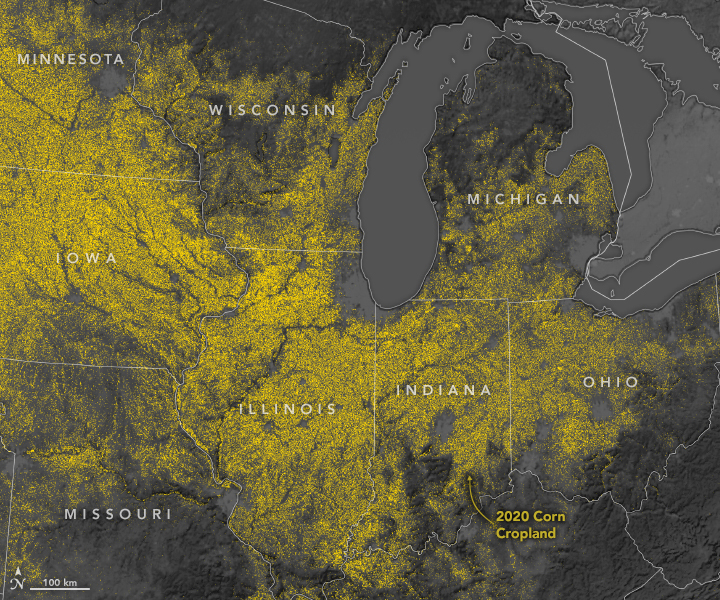
Friedl noted that Doorn understands the missions of both NASA and the USDA, and with his agricultural roots, he knows the needs of farmers and agricultural businesses firsthand. “Often in meetings, Brad would remind us that the margins for a farmer are in the pennies,” Friedl said. “They wouldn’t be able to afford remote sensing,” so making sure NASA’s satellite information was free and accessible was that much more important.
“It’s hard to imagine that NASA would have the agriculture program it does without somebody like Brad continuing to advocate and push for this to exist,” said Alyssa Whitcraft, the director of NASA Acres. “He knows how critical it is for satellite data to be accessible and useful to those on the ground. He makes sure we never lose sight of that.”
An Emissary Between Worlds
Colleagues say Doorn’s strength lies in his ability to bridge worlds, whether it’s making connections between agencies like NASA and USDA, or connecting such agencies to state water councils or farming communities. His fluency in translating complex science into simple terms makes him equally at ease in whichever world he finds himself.
“There’s NASA language and there’s farm language,” says Lance Lillibridge, who farms about 1,400 acres of corn and soybeans in Benton County, Iowa, and has helped lead the Iowa Corn Growers Association. “Sometimes you need an interpreter, and Brad’s that guy.” He recalled a meeting where some farmers were skeptical, wary of NASA’s “big brother” eyes in the sky, “but Brad had a way of putting people at ease, keeping everyone focused on the shared goal of better data for better decisions.”
“One of my favorite memories of Brad,” said Forrest Melton, the OpenET project scientist at NASA’s Ames Research Center, “is an afternoon spent visiting with farmers in western Nebraska, drinking iced tea and talking with them about the challenges facing their family farm.”
Colleagues describe Brad as a nearly unflappable guide, one who knows the agricultural landscape so well that he makes the impossible seem manageable. They say his calm, approachable style, paired with a ready smile, puts people at ease whether in Washington conference rooms or Midwestern barns. And he listens closely to understand where there may be opportunities to help.
“Few people in the water and agriculture communities, from the small-scale farmer to the federal government appointee, aren’t familiar with some aspect of the work Brad has enabled over the decades,” said Sarah Brennan, a former deputy program manager for NASA’s water resources programs. “He has supported the development of some of the greatest advancements in using remote sensing in these communities.”
It’s About the People and the Team
Doorn’s leadership is less about issuing directives, colleagues say, and more about cultivating growth—in crops, in data systems, and in people. Like a farmer tending to his fields, he nurtures the potential in every project and person he encounters. “Almost everyone who has worked for Brad can point back to the opportunities he provided them that launched their successful careers,” said Brennan.
Over the years, he’s added layers to this work of creating paths for others to succeed: as president of the American Society of Photogrammetry and Remote Sensing, as an adjunct professor at Penn State, and as a youth basketball league director.
“What I’ve learned, probably in the military and I’ve carried it forward, is that it’s the people that matter,” Brad said. “I had great mentors who believed it’s just as important to help others grow as it is to meet the day’s demands. Those roles shift your focus toward the people around you, and often, the more you give of your time, the more you end up getting back.”
It has been a long journey from hauling milk and animal feed across the South Dakota plains to surveying them now as a scientist. The tools of his career have changed—from truck routes to satellite orbits, from paper maps to digital data—but his mission remains the same: helping farmers feed the world.
“Growing up in South Dakota, I saw firsthand the challenges farmers face. Today, I’m proud to help provide the tools and data that can make a real difference in their lives,” Doorn added. “Whether it’s a farmer, an economist, or a military analyst, if you give them the right tools, they’ll take them to places you never even thought about. That’s what excites me—seeing where they go.”


